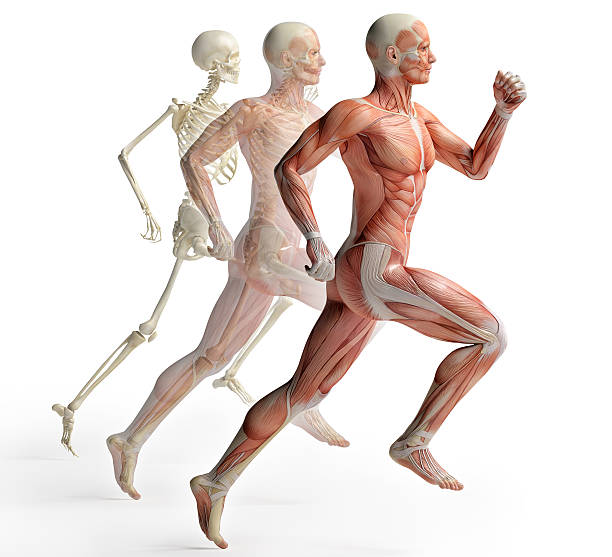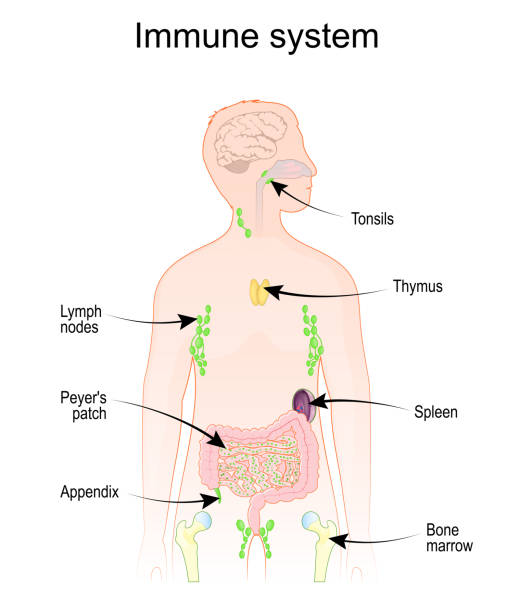Bones are the silent architects of our bodies. They shape us, support us, protect us, and carry us through life, all while performing countless hidden tasks that most of us never even think about. At first glance, bones may seem rigid and lifeless, but in truth, they are some of the most remarkable, dynamic, and surprising structures in the human body. Far from being inert scaffolding, bones are living tissues—constantly changing, repairing, and communicating with the rest of our body in ways that continue to astonish scientists.
The human skeleton is not just a framework; it is a masterpiece of evolution. It allows us to walk upright, gives us fine motor skills, shields our organs, and even produces the blood that keeps us alive. Yet, behind this familiar structure lies a world of fascinating facts that reveal just how extraordinary bones really are.
In this article, we will explore ten of the most surprising facts about human bones. Each fact uncovers something unique, often counterintuitive, about the skeletal system—reminding us that bones are far more than the rigid sticks we imagine from childhood skeleton models. They are alive, adaptable, and deeply intertwined with what it means to be human.
1. Bones Are Alive—and Constantly Changing
When most people picture bones, they imagine dry, brittle structures like the ones displayed in museums. But in reality, your bones are living tissues that are constantly being broken down and rebuilt.
Inside your skeleton, cells are at work every moment. Osteoclasts break down old bone, while osteoblasts build new bone tissue. This process, called bone remodeling, ensures that your skeleton stays strong and adapts to your body’s changing needs. Remarkably, your entire skeleton is essentially replaced about every 10 years through this cycle.
This means that the bones you have today are not the same bones you had a decade ago. They have been renewed, reshaped, and strengthened in response to your diet, physical activity, and even stresses placed on them. Bones are dynamic, living structures—silent proof that growth and change never really stop.
2. Babies Have More Bones Than Adults
One of the most surprising facts about human bones is that babies actually have around 300 bones at birth, while adults have just 206. Where do the extra bones go? They fuse together as a child grows.
For example, a baby’s skull is made of several separate plates, allowing for flexibility during birth and growth in the early years. Over time, these plates fuse into a solid skull. Similarly, bones in the spine, pelvis, and limbs fuse as the skeleton matures.
This clever evolutionary adaptation makes birth possible and supports rapid growth in infancy. By adulthood, the skeleton becomes stronger, more rigid, and better suited to carrying the body through the challenges of life.
3. Bones Are Stronger Than Steel
It may be hard to believe, but bone is an incredibly strong material. Ounce for ounce, human bone is stronger than steel. A cubic inch of bone can withstand the weight of about 19,000 pounds—that’s roughly the weight of five pickup trucks!
This strength comes from bone’s unique composition. Bones are made of a combination of collagen (a protein that gives flexibility) and hydroxyapatite (a mineral that provides hardness). This balance makes bones both strong and slightly elastic, able to withstand immense forces without breaking.
Yet despite this strength, bones are also lightweight. The hollow design of long bones, like the femur, allows them to be both sturdy and efficient. It is this remarkable combination of strength and lightness that has enabled humans to walk, run, climb, and explore the world in ways no artificial material has fully replicated.
4. Bones Produce Blood
Perhaps one of the most unexpected roles of bones is their function as blood factories. Deep within the cavities of many bones lies bone marrow, a spongy tissue that is absolutely essential for life.
Bone marrow is responsible for producing red blood cells (which carry oxygen), white blood cells (which fight infection), and platelets (which help blood clot). This process, known as hematopoiesis, takes place primarily in large bones like the pelvis, femur, and sternum.
Every second, your bone marrow produces millions of blood cells, replenishing your supply and keeping your body alive and functioning. Without this hidden role, the skeleton would not only lose its life-giving function—it would make survival impossible.
5. Your Bones Store Minerals and Talk to Your Body
Bones are more than structural supports; they are also chemical reservoirs. They store essential minerals like calcium and phosphorus, releasing them into the bloodstream as needed to keep the body in balance. This helps maintain strong bones but also supports nerve transmission, muscle contraction, and countless other biological processes.
Even more surprising is the fact that bones can communicate with other organs. Scientists have discovered that bones release hormones, such as osteocalcin, which influence brain development, memory, and even fertility. In other words, your bones are actively talking to your body, regulating far more than just your skeleton.
This discovery has transformed the way scientists think about bones—not as passive structures, but as active participants in maintaining overall health.
6. Bones Can Heal Themselves
Unlike many other tissues in the body, bones have a remarkable ability: they can heal themselves. When a bone breaks, it sets off a complex biological process.
First, blood cells rush to the site, forming a clot. Then, a soft callus of cartilage forms, gradually replaced by hard bone. Over weeks and months, bone tissue reorganizes, eventually restoring the bone to near-perfect condition.
What’s astonishing is that, in many cases, the healed bone is just as strong as it was before the fracture—sometimes even stronger. Few other tissues in the body can regenerate with such resilience.
This regenerative power has fascinated scientists for centuries, and it has inspired advances in medical treatments, from bone grafts to tissue engineering, as we search for ways to apply the skeleton’s healing magic to other parts of the body.
7. The Smallest and Largest Bones in the Body Are Astonishingly Different
The human skeleton includes a breathtaking diversity of bones, ranging from the tiniest to the largest.
The smallest bone in the human body is the stapes, located in the middle ear. It measures just about 3 millimeters in length—smaller than a grain of rice. Despite its size, it plays a crucial role in hearing by transmitting sound vibrations from the eardrum to the inner ear. Without it, our ability to hear would vanish.
The largest bone is the femur, or thigh bone. It can be up to 20 inches long in adults and bears much of the body’s weight when we stand, walk, or run. The femur is so strong that it can withstand forces several times your body weight.
This striking contrast—from the delicacy of the stapes to the strength of the femur—shows just how adaptable and specialized bones can be in supporting the functions of the human body.
8. Bones Reveal Secrets About the Past
Bones are storytellers. Long after flesh decays, bones remain, preserving vital information about the people who carried them. Anthropologists and archaeologists have learned to read these stories, uncovering details about age, sex, diet, health, and even social practices from skeletal remains.
For example, wear patterns on teeth can reveal what foods someone ate, while healed fractures can tell stories of injuries and survival. The bones of ancient humans have revealed how our ancestors migrated, adapted, and evolved.
Even in the modern world, forensic scientists rely on bones to solve crimes and identify unknown individuals. Bones are not just biological structures; they are records of individual lives and windows into human history.
9. Bones Shrink and Change with Age
Bones may be strong, but they are not immune to the passage of time. As we age, our bones gradually lose density and strength, becoming more brittle and prone to fractures.
This process is partly due to changes in hormone levels, particularly in women after menopause, when decreased estrogen accelerates bone loss. Conditions like osteoporosis can make bones dangerously fragile, leading to fractures even from minor falls.
Additionally, the discs between the vertebrae in the spine shrink over time, often causing people to lose height as they age. These changes are a reminder that our skeletons are dynamic, living systems that evolve throughout life.
However, lifestyle factors like diet, exercise, and exposure to sunlight (which helps the body produce vitamin D) can slow bone loss and keep the skeleton strong well into old age.
10. Bones Can Outlast the Body by Thousands of Years
While bones are alive during our lifetimes, they can also endure long after death. Under the right conditions, bones can survive for thousands—even millions—of years, becoming fossils that provide priceless records of ancient life.
It is thanks to the durability of bones that we know so much about dinosaurs, early humans, and extinct animals. In fact, some of the oldest fossils ever discovered are billions of years old, offering clues to life’s earliest forms.
Even in human history, bones have served as one of the most enduring records of our past, surviving when buildings, tools, and written words have long since vanished. They are both fragile in life and enduring in death—a paradox that makes them one of nature’s most fascinating creations.
Conclusion
Bones are far more than the silent scaffolding of our bodies. They are alive, resilient, intelligent structures that adapt, communicate, and even regenerate. They hold our weight and our secrets, connect us to our ancestors, and keep us standing against the forces of the world.
From their hidden role in producing blood to their surprising strength and their ability to endure long after death, bones are among the most extraordinary tissues in the human body. Each fact we uncover about them deepens our appreciation for the skeleton—not as a static frame but as a dynamic, living system that shapes who we are.
The next time you walk, stretch, or simply breathe, remember the silent miracle at work beneath your skin. Your bones are not just supporting you; they are actively shaping your life in ways far more surprising than most of us ever realize.






